| Zeitschrift Umělec 2004/4 >> Spaces for Collective Work: Film and Video | Übersicht aller Ausgaben | ||||||||||||
|
|||||||||||||
Spaces for Collective Work: Film and VideoZeitschrift Umělec 2004/401.04.2004 Estelle Artusová | theory | en cs |
|||||||||||||
|
In groups, communities, or simply in pairs, working with others is more than an option for the artist, it may be a temptation. The organization of an artistic group acts upon its members as much as it influences the work which is eventually made. The term, eventually, should be emphasized because the community of artists itself can be presented as an oeuvre. The artistic group, considered as an “idea” which is supported by each member, is a truly modern invention. For example, the Surrealists, with André Breton as their chronicler, proclaimed the existence of the group as a life esthetic. In these forms of associations, the artist’s individuality tends to disappear or blend itself in the group activities more-or-less anonymous. The Situationists have picked up the Surrealist torch in effort to radicalize it. The “relational esthetic” of Nicolas Bourriaud or the “contextual art” of Paul Ardenne theorize contemporary artistic activity where the artist engages someone else, most often his public, sometimes an institution or a specific person – who could be identified as a participant.
I shall examine the hypothesis according to which it is the nature of the time implied in the process of working together but also the time specific to the work in question, which determine the relationships in the group. This hypothesis will be considered in the context of video art, and also in the industrial context of cinematographic creation. On the basis of those two perspectives we will see how collaborations within a group emerge and how different concepts of time influence them. Film Workers The making of a film requires collaboration with others. Maybe it was not a coincidence that the inventors of cinematography were two – two brothers. When making a film – even with the most basic of cameras and with the least of ambitions, one always requires an other (at least assuming the camera doesn’t supplant this other, as is the case with some approaches to art video). With cinema, working together seems inevitable, but what kind of collaboration it is? Are we not actually speaking of a team? “technical team,” “film team” “montage team”… in contrast to a group where everyone is involved in a variety of ways, the collective work of a team is governed by strict regulations. In the cinema team each participant has a designated place, a fixed and highly specialized task to perform. The script follower- is responsible for monitoring the set such that no flower pot on the cabinet disappears in the middle of a scene. So collaboration here depends on an important specialization of tasks. These tasks are not interchangeable. It’s like a mechanism, where each part has its own unique purpose. In theory, interactions are limited by a relatively rigid program. One can’t be an editor at one moment and a director in the next; an actress does not stand in for an extra. The artistic experience of one or the other is in that way reduced to their assigned function. Evidently it is much more complex in reality. Whereas some directors, like Claude Chabrol, who completely hands over editing such that film labor transgresses the directorial framework, others, like Philippe Grandrieux, attend to everything from start to finish. The fact is that it’s exactly when the process of realization is considered as a mechanism with specialized but interchangeable parts, a film has the greatest chance of failure. The most successful films are born from sessions having abandoned the intended machinations. The artistic aspect requires alchemy more than machinery. Thus, because it engages important human and financial means, film directing is at first organized in a planned manner. In terms of responsibilities, the team structure is pyramidal—in the sense that each member is responsible to a superior with the ensemble being subordinate to a director’s plans—and also horizontal, in that the director delegates the technical responsibilities to those appropriate. In the French system of production, it is the director who manages various aspects of the work and who, as auteur, carries ultimate responsibility for the final film. This schema is strikingly similar to common industrial production in a capitalist economy. The relation of the director to the producer reinforces the link: the director reports to the producer who in turn controls the capital. The work of film is such that it enables a financial objective. It’s calculated according to an initial budget assuming the interest of the viewer and potential ticket sales. As such, certain films are financial retainers, whereas others leave no hope for a financial return. As Walter Benjamin demonstrated, cinema is art for the masses, a mass production based on the possibility of infinite reproductions. What defines a film as a particular work of art could be better characterized according to principles of financial return. From this moment on, a whole organization of internal relations within the working group becomes subordinate to this principle. The Montage The process of creation in cinema and industrial production are analogous. The systematization of mass production and rationalization of work were simultaneously at the incipience of modernity. It is no coincidence that cinematography was born in 1895, a few years after global business adopted Frederick Winslow Taylor’s scientific management system. Taylor proposed these four “scientific principles” of organization: 1) The separation of the concept from the execution, where the phases of the processes of production are prepared and put to work in a centralized manner. 2) The analysis of each operation where the tasks are rendered precisely, the manner of executing them and the time required to complete them (Chronometrage). 3) The training and selection of workers 4) Supervision of the work with payment linked to the quality of the finished product. Management oversees everything in terms of decisions; the workers follow the directions. The same with cinema where only the director “knows” where the project is headed during filming. Taylorism promotes the separation of the activities and the specialization of the workers related to their fixed posts and basic operations. Here, again, the similarity with movie production is complete. Taylorism, which was followed by Fordism, rationalized human activity, that is to say to optimize the working time for productive results. One of the principles of Fordism is to determine the motions of an employee by the relation to the speed of a machine, not the other way around as would be the case in a traditional economy. Fordism thus designates the rationalization of the Taylorian mode of work organization with the creation of the assembly line (chaîne de montage), that is notably at the origin of standardization and of the serial production. Work began to be organized serially, in a chain of production. Nicolas Bourriaud observes that “film production metaphors are often used to describe the assembly line,” and he quotes Georges Navel: “We were working like in those crazy films where the images follow each other at a shocking speed. We were racing with time (…) We reached a remarkable rapidity of gesture.” I consider this analogy to be less interesting than the reverse, in which film editing is compared to the factory production line. It has been very richly documented: Fritz Lang makes Metropolis, Chaplin, Modern Times asserting that the production line is dehumanizing, and Tati, with Jour de fete, emphasizes the emptiness of human relationships brought on by modernization. What’s at stake here is the very real structuring of time and the organization of that time in relationship to apparatus. Editing a film essentially involves assembling together a determined number of pictures into a pre-selected order. As an art form, only film can come so close to modern organization of work because it depends entirely on mechanical principles of the machinery involved in the film production. Time There is no cinema without machinery: the camera, microphones, projectors, etc. The artistic conception of time is definitely part of the film, but it would be a mistake to think that it alone determines it. The machines themselves bring their own temporality. As Gilles Deleuze says, “Film effectively functions on two complementary levels: the momentary cuts called frames; and impersonal, uniform, abstract, invisible, imperceptible motions or time that is “in” the machine and with which the frames move.” To “make the frames move” with the help of a machine requires the control of that motion, another words the control of time with machinery—an aspect of industrial production. However, it is precisely that which limits relations at the core of a group or a team. The activity of each member at any given moment is determined by an apparatus, more precisely by the timing induced. Interpersonal relations are thus subordinate to that temporality. The consequences of that usage of apparatus are numerous, and sometimes unexpected. Nicolas Bourriaud recalls that measuring time in daily life at the end of the 1890s, like an extension of Taylorism to the private sphere, is an anomaly that can be identified in film as well. “I note,” he writes, “that Film corresponds to the logic of the division of labor, in a rational project of production and of mass consumption, and of the planning of free time. (…) A worker is given a small piece of land, in hope that it will stop him from spending his free time at the bar. One can see how the cinema arrived at the right time for that process of rationalization : this activity limited by time (a film lasts an hour or two), located in specialized places, following the employers’ will concerning the use of free time, leads to TV at home” The “artistic dimension” of a film and relations between people that can arise during filming go beyond this rather caricature idea, but this critique stands correct concerning the management of free time. Auteur Productions The occasional multiple director films are most often realized by “x” brothers, following the tradition initiated by the Lumière brothers in what seems to be the unique way of doing feature movie “together”. But with this notable exception, the cinema industry demands a single author and thus returns to the romantic concept of the lonely artist in front of his work. It is striking that films Jean-Luc Godard created with others—particularly with the Dziga Vertov group that he started in 1968 with Jean-Pierre Gorin—were all shot in 16 mm and were confined to non-commercial distribution, even though Godard was at that time a recognized artist. With the Dziga-Vertov group, Godard, from 1967 to 1972, was simultaneously socially and artistically engaged. He collaborated on a number of films including Pravda, Vent d’est and Luttes en Italie in 1969, Vladimir and Rosa in 1971, Tout va bien and Letter to Jane in 1972. But as a consequence to the departure from the traditional scheme of feature-length films, these four years signified for Godard a break from the professional world of film (the previously cited films were excluded from commercial circuit). As it turns out, the group was particularly interested in problems of editing. The question that Godard is interested in is: since film is formed by images and sound, how can one use them in a “revolutionary way”, disregarding the imperatives imposed by mass cinema? With his group he attempts to continue the tradition dear to Vertov. Thus Godard starts to experiment with non-linear editing in which images are freely associated. He retains from that experience a taste for collective work to which he would frequently return later, in particular with Anne Marie Mieville , as well as an ongoing interest in non-conventional editing techniques. It is this freedom from convention that one finds in Histoires du Cinema, distributed most of the time in art institutions like the Paris’s museum of Modern Art or the Centre Georges Pompidou. In almost five hours and eight chapters, Histoires du Cinema introduces a blend of images, texts and of borrowed quotations, in an exercise that, Francoise Parfait describes as reuniting all aspects of video art syntax. The departure from the “assembly line” mentioned in relation to feature movies, seems to lead Godard to films in which experimentation with images is completely open. As a consequence Histoires du Cinema is closer to a video art movie than to a feature film. Can we argue that images in such a film are freely organized because the group’s relationships are informal ? Is that kind of loose organization can only be possible outside of the motion picture industry ? And in this case, is it the distinctive quality of video art ? Collaborations in early video art : Artists and Engineers Video art follows a poorly marked path between television and cinema. Disengaged from financial pressure associated with these mechanisms of production, video artists might enjoy the relative freedom to experiment with original means of collaboration. The majority of the early video projects from the sixties were purely formal experiments with electromagnetic waves. Wolf Vostell and Nam June Paik were interested more in the television set and in the images quality than the associated narrative contents. The lack of technical knowledge pushed the video artist to collaborate with audiovisual specialists. As an example of these duos of artist-engineers, we might recall the partnership of Nam June Paik and Schuya Abe (inventors of the Paik-Abe Synthesizer in 1969), the work of Steve Rutt and Bill Etra, or the association of Aldo Tambellini and the technicians at Bell Labs. But there is nothing particularly noteworthy about these kinds of relationships. Everything is consistent with the traditional principles of group work in the sense that tasks are clearly designated: it is expected that the artists will introduce the creative idea and the technical partners will assist with the production. Mobility within groups remains very limited. From this point of view, video art cannot pretend that it has defined new possibilities of collaborative work. Videoart Assumes the Cinematographic Model Removed from the initial fascination with technique, video artists today have the possibilities to realize their films in a more independent manner. Thanks to computer technology, the director has become the master of all technical aspects of production, and is no longer required to collaborate with outside experts. All this should have led to open experimentation in the way creative communities are organized. But what did we observe in reality? Most often, motion picture production structures are duplicated where a team is supervised by the video artist. Of course there are, here or there, a few fruitful associations: Charles de Meaux and Philippe Pareno work with neo-documentary in Le Pont du Tieur, Peter Fischli and David Weiss made together Der Geringste Widerstand , and Steina & Woody Vasulka work in tandem on numerous projects. But these heterodox collaborations remain by-and-large in the minority. Sharing Subjects Perhaps there are other kind of collaborations to experiment with, which are not based on the organization of the group at one moment. In observing cinematic modes of collaboration, I have come to the opinion that the most remarkable one is vague and indirect. I am thinking here of the sequels filmed by different directors. In this case we are talking about directors who elaborate one after another on the “subject” of a film, not to say the film itself. Directing then is collective even if that collaboration is not simultaneous. It is spread out in time like chapters of a book written by several authors. If you take as an example the four films of the Alien series, four directors succeed one another in forming a coherent artistic object (one single story upon which each film expands). In this particular example, the series form a distinct entity, which is not always the case. If we consider the James Bond phenomenon, we can recognize that the subject of the films is defined around a central character-hero, but the whole doesn’t assume the unity of time (those are not episodes, James Bond remains the same age, he isn’t played by the same actor, etc.) even if the narrative elements accumulate. In video art, the most interesting example of this is Ann Lee. Ann Lee is a “creature” of synthesis presented in 1999 by Philippe Parreno and Pierre Huyghe, and then offered to other contemporary artists to work with. Two animated films from 2000, Anywhere out of the World, by Philippe Parreno and 2 minutes en dehors du temps, by Pierre Huyghe, signified the return to life of Ann Lee, originally a secondary character from the world of Japanese animation (Manga). The idea followed its course: Dominique Gonzalez-Foerster created Ann Lee in Anzenzone, Francois Curlet: Witness Screen, and Pierre, Joseph & Mehdi Belhaj Kacem: Theorie du trickster. Following the proposal of Philippe Parreno and Pierre Huyghe, Ann Lee can be adopted by anyone. In 2003, the video artist Eric Valette decided to symbolically capture Ann Lee and offered it as a “work proposal” to some young artists including myself. For this occasion I made an animated film in which Ann Lee finds herself in the famous comic South Park. I reinvested into a character that I hadn’t created and a place in an animated context that didn’t belong to me. Ann Lee thus escaped her virtual existence in order to find herself amid this American trash comic in which she meets her destiny, both comic and tragic. There is a character in South Park named Kenny whose main “function” is to die in a different manner each time. In my own animated drawing Ann Lee substitutes for that character. In a certain way Kenny, like Ann Lee, never dies, or rather, they are both always resuscitated in the next chapter. It is this “zombie” state that I adopt in my animation (entitled Ann Lee Resurrection), where Ann Lee is found getting successively shot and impaled on a flagpole in a perfectly tasteless setting. The following scene shows a tombstone on which Ann Lee epitaph is written, but also the names of her original creators: Huyghe and Parenno. Here, the film seems to end, when suddenly the ground moves and an Ann Lee, completely decomposed, gets out of her tomb pointing a triumphant fist towards the sky… just before an airplane comes and slams into her! The comic effect is accentuated by the use of loops and the overly primitive aspect of the drawing. With Ann Lee Resurrection I share with other artists the same artifact and contribute to its myth. Of course that doesn’t constitute a true group effort, but with everybody working separately, the result as a whole signifies a sort of cooperation. The creation of a film becomes the proposal of a common working playground that could be inhabited by everyone anytime.
01.04.2004
Empfohlene Artikel
|
|||||||||||||
|
04.02.2020 10:17
Letošní 50. ročník Art Basel přilákal celkem 93 000 návštěvníků a sběratelů z 80 zemí světa. 290 prémiových galerií představilo umělecká díla od počátku 20. století až po současnost. Hlavní sektor přehlídky, tradičně v prvním patře výstavního prostoru, představil 232 předních galerií z celého světa nabízející umění nejvyšší kvality. Veletrh ukázal vzestupný trend prodeje prostřednictvím galerií jak soukromým sbírkám, tak i institucím. Kromě hlavního veletrhu stály za návštěvu i ty přidružené: Volta, Liste a Photo Basel, k tomu doprovodné programy a výstavy v místních institucích, které kvalitou daleko přesahují hranice města tj. Kunsthalle Basel, Kunstmuseum, Tinguely muzeum nebo Fondation Beyeler.
|








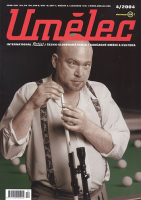










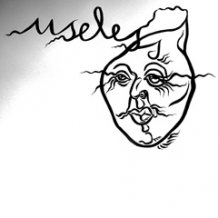












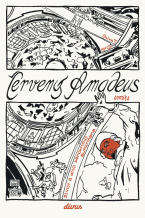
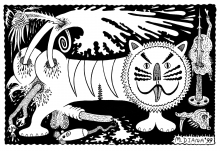
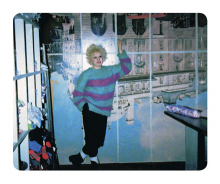


 New book by I.M.Jirous in English at our online bookshop.
New book by I.M.Jirous in English at our online bookshop.
Kommentar
Der Artikel ist bisher nicht kommentiert wordenNeuen Kommentar einfügen